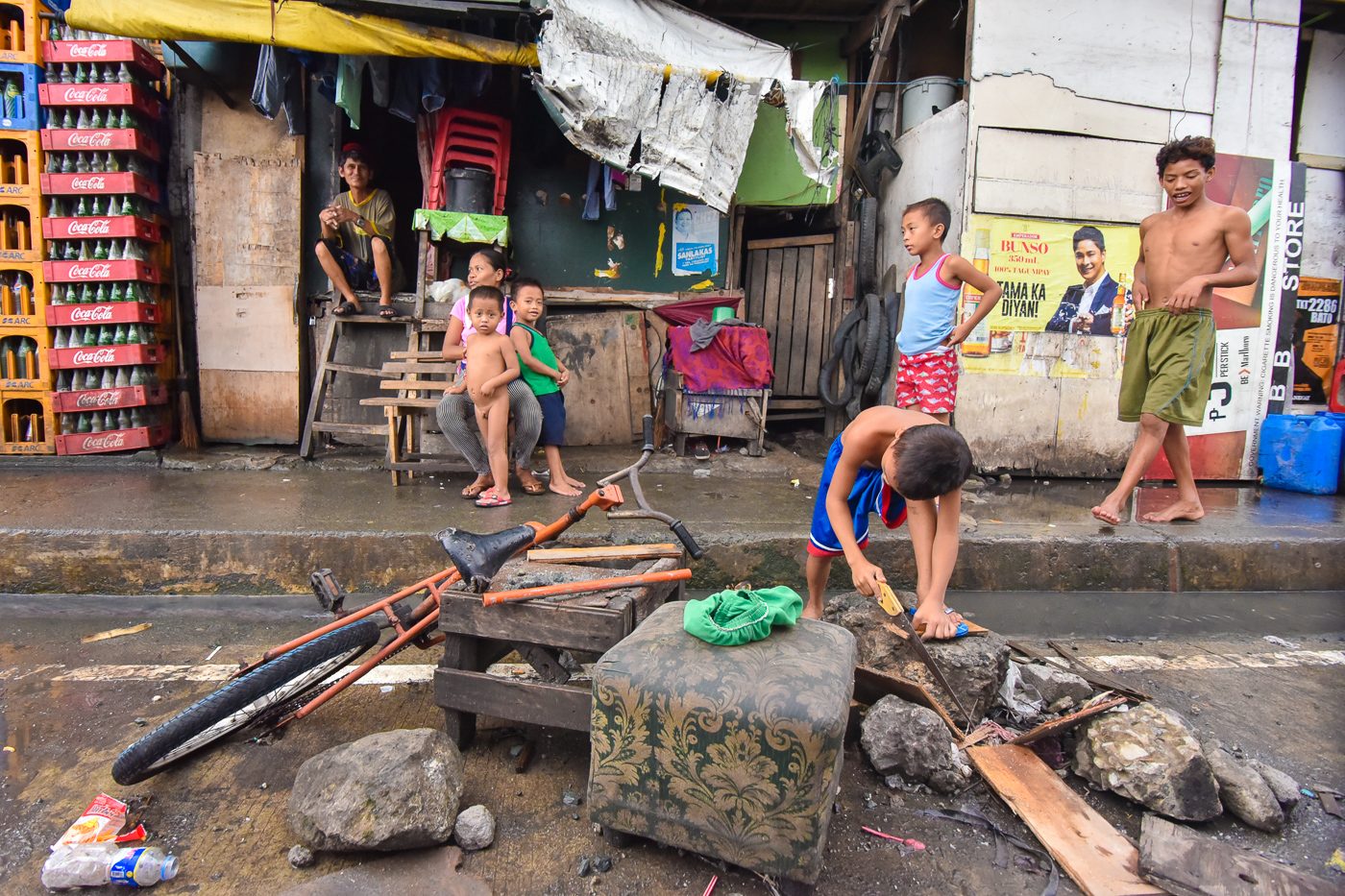SUMMARY
This is AI generated summarization, which may have errors. For context, always refer to the full article.

MANILA, Philippines – Poverty incidence among the Philippine population fell to 16.6% in 2018 from 23.3% in 2015, the Philippine Statistics Authority (PSA) announced on Friday, December 6.
This translates to 17.6 million Filipinos who lived below the poverty threshold last year. An average Filipino needed at least P2,145 on average to meet the most basic food and non-food needs in 2018.
On a per-family basis, the number of poor families also declined to 12.1% in 2018 from 17.9% in 2015.
This means there were 3 million poor families in the country who needed an average of P10,727 to meet basic needs in 2018. (READ: [ANALYSIS] On poverty lines and counting the poor)
Here’s a summary of the latest report of the @PSAgovph on Philippine poverty. @rapplerdotcom pic.twitter.com/5RuzUfm62n
Meanwhile, subsistence incidence, or the proportion of Filipinos whose income is not enough to meet the most basic food needs, was registered at 5.2%, lower than the 9.1% recorded in 2015.
Subsistence incidence among families was recorded at 3.4% or around 800,000 food-poor families in 2018. This is lower than the 6.4% in 2015.
The poverty gap was also reduced to 2.6% from 4.5%, while the severity of poverty was reduced to 0.9% from 1.7%.
WIth poverty declining, the National Economic and Development Authority (NEDA) said the country is on track to meet targets set under the Philippine Development Plan 2017-2022.
The government’s goal is to bring down poverty to 14% by 2022.
“We have almost reached our target to lift 6 million Filipinos out of poverty by 2022 as 5.9 million have already been lifted out of poverty as of 2018,” NEDA Undersecretary Adoracion Navarro said.
The better figures were attributed largely to the improved market conditions that increased salaries and wages of the poor.
“The sustained implementation, expansion, and enhancement of the government’s social assistance programs (Pantawid Pamilyang Pilipino, Unconditional Cash Transfer, Pantawid Pasada, and Social Pension) provided additional income to the poorest sectors of the society,” added Navarro. – Rappler.com
Add a comment
How does this make you feel?
There are no comments yet. Add your comment to start the conversation.